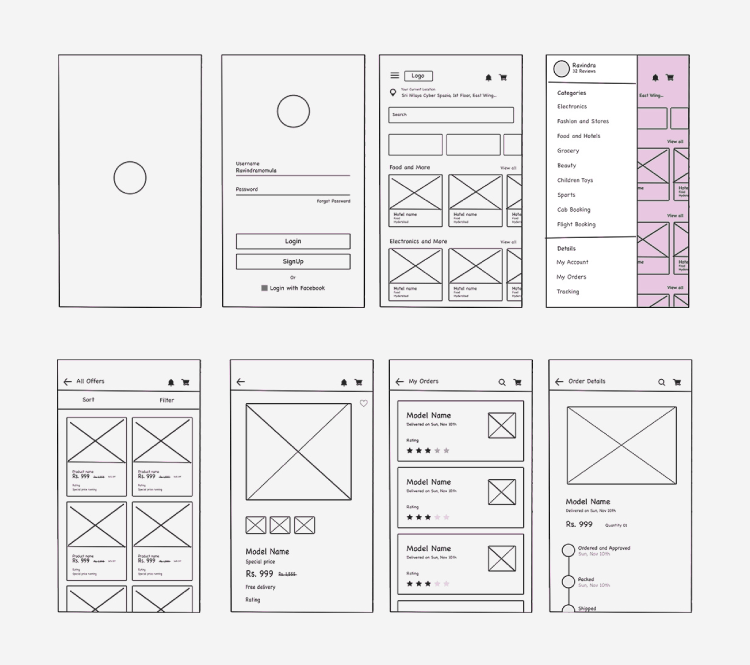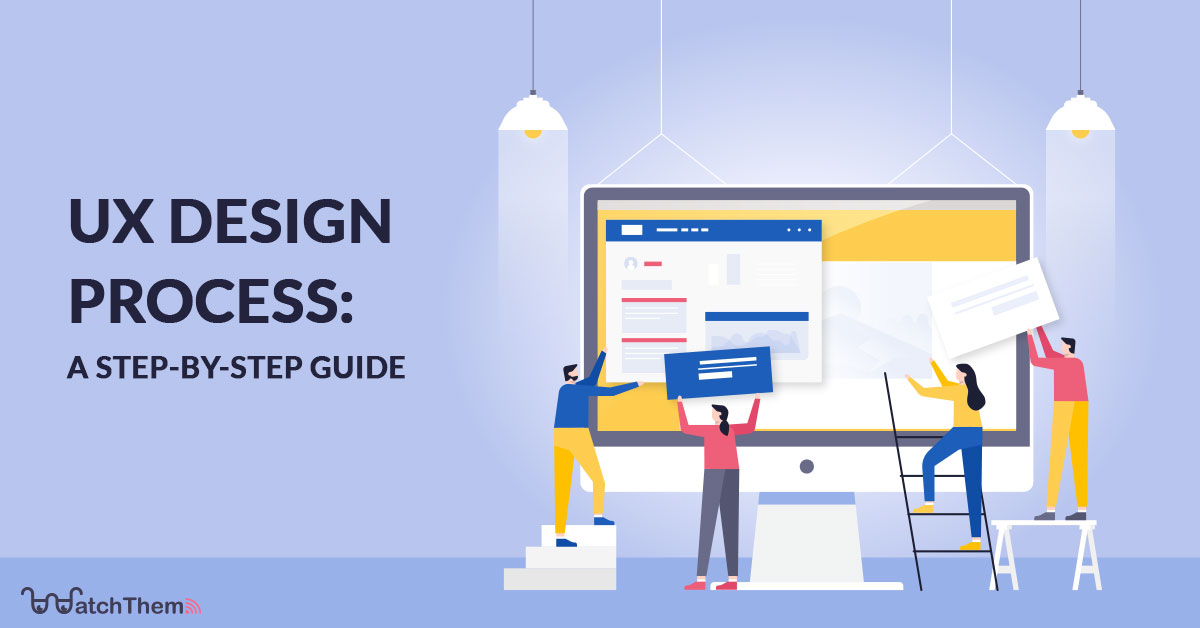Page Contents
We all certainly have the similar experience of opening a website for the first time and then closing it after just a few seconds. The reason, most probably, was that it failed to persuade us that “this website has the solution to our problem” before we decided that it’s not worth the time we spend on it. But why does it happen with some websites and exactly the opposite with some others? Well, the answer is in the UX (user experience) design.
When a website or an application goes through the UI UX design process, it means that it has anticipated the users’ needs and has provided solutions to satisfy their expectations.
This article will go through a step-by-step introduction to the UX design process and talk about each phase briefly.
Web platforms need to understand their users’ behavior in order to deliver the optimal user experience and increase conversions. WatchThemLive makes it easy for anyone on your team to find out exactly where users drop off, what they like and dislike in your product, so you can make the right changes to make a deeper impact. SIGN UP for FREE!
What Is User Experience (UX) Design?
Before we dive into the UX design process and methodology, we need to have a clear definition of UX design itself.
As you can tell by its name, the whole user experience design process focuses on the user. We can describe UX in different ways (which are harmonious in essence) from the viewpoint of a designer and a consumer.
In the view of a designer, UX design is the process of creating products that give consumers meaningful, relevant, and flexible experiences.
From a consumer’s perspective, UX is how a person feels while engaging with a system. This system could be a website, an application, or desktop software.
Why Is the UX Design Process Important?
By having a better UX design, you will improve your user satisfaction. What it leads to is more conversion and retention. Users are more loyal to a brand or product that provides them with a good experience.
A good UX design can save plenty of costs in the process of development, bug fixing, and even marketing.
Also, have in mind that the product shouldn’t necessarily be new to become successful. There is a high chance of success for products that present an already-existing idea in a better way. Since it focuses on the user, the UX design process can always help you find the “better way.”
What Is the UX Design Process?
Although the UX design process is just one fraction of the whole product development process, its massive impact on its success is undeniable.
A successful UX process is one that revolves around the user and prioritizes the user’s needs.
Now it’s time to go through the UX design process steps and discuss each one briefly.
1. Define
The first step in the UX design process is defining the product. The team in charge of gathering user needs will do so depending on their business context. This step is critical since it is at this phase that the accurate scale of the product is realized. You also need to inform your UI/UX designers about the requirements.
This phase involves all of the teams working on the project, including the design, business managing, and product managing teams. The whole team should consult clients and examine their needs within the context of your business.
User personas, user stories, and use case diagrams are important deliverables of this phase.
2. Research
For a designer, the most critical aspect is research. The design team investigates how the current system functions based on customer requests.
The following are the three primary activities at this stage:
- Know what the competition is all about.
- Examine your current domain thoroughly.
- Examine your rivals’ strategies.
- Learn the newest UI/UX trends, design concepts, and guidelines.
3. Analyze
Now it’s time to use the information gathered during the research phase. Create hypothetical personas and experience maps using the data you’ve gathered.
Personas: By Creating hypothetical situations, designers can learn more about the many types of people who will use the product. You can achieve a realistic depiction of the final product by doing so.
User Experience Maps: A user experience map depicts users’ movement through your final product. All of this is accomplished via visual representations and correct interactions with clients throughout the product definition phase.
One of the tools that can be incredibly useful in the process of analyzing is WatchThemLive. You can have access to various features such as analytics, heatmaps, user tracking, session recording, etc. on WatchThemLive. The information you get from these features can be extremely helpful in analyzing your current position and finding your path to success.
SIGN UP for FREE and discover how you can make your users happier, more engaged, and achieve more conversions with WatchThemLive!
4. Design
We collected ideas in the previous three processes. Now it’s time to bring life to them and start working on the final visuals. The design team will put the final design into action in this step.
The main outcomes of the design phase are:
- Sketches: Sketching is the first step in the design phase. Designers create numerous hand-drawn sketches to visualize concepts in a simple way. After the sketching phase, the UX/UI designers choose one of the options and stick to it.
- Wireframes: A wireframe is a visual representation of the page hierarchy, placement of the elements, and the overall appearance of the end product. A wireframe is the product’s backbone and skeleton.


- Prototypes: Prototypes focus on the interaction and how it feels to use the product. What prototypes do is simulate the final product.
- Design Specifications: It describes how the product will work and its style. It explains how to build the user experience by describing the procedures and graphical elements. User flow and task flow diagrams are also included in the design specification.
5. Test
Testing is the phase that decides the final product’s overall quality. The testers prepare a list of items that need to be improved and submit it back to the team to be fixed.
There are a few things to consider while reviewing your final work:
- User-friendliness
- Flexibility
- Ability to satisfy the users’ needs
- Ability to retain the users
6. Iterate
Iteration happens all the way through the process, not only in each step that you go through but also in the bigger cycle.
You should always remember that the market is changing continuously. So, once you’re finished with one idea, you should go back to researching your customers to check if their needs have changed. You need to come up with new ideas and test and validate them.
The cycle of iteration should never be left out of the UX process.
Conclusion
There is no such thing as a standardized, invariable solution when it comes to UX design. But no matter the method you choose, the end aim is always the same: to build a fantastic product for your users and to reach this goal, you need to research, analyze, design and validate. Use what works best for you, and don’t forget to continue improving your design even after its release.
WatchThemLive is the most intelligent way to deal with your customer’s behavior. Our smart, transparent tool helps you understand how users are using your product to deliver the best user experience ever. SIGN UP for FREE!

